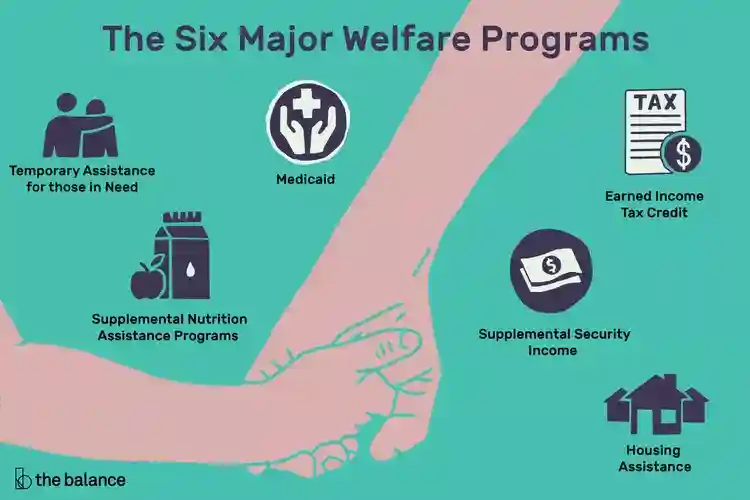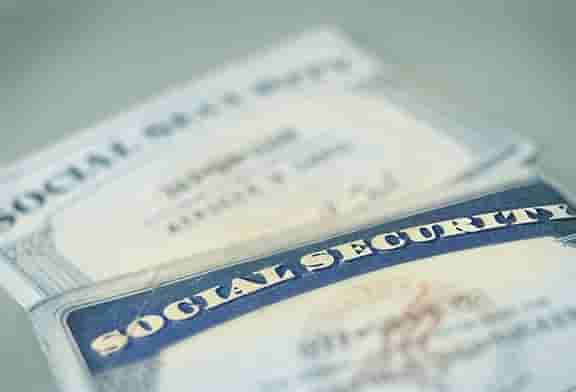How difficult is it for a low-income Americans to apply for a welfare benefit?
According to a new analysis, low-income Americans face lengthy wait times and occasionally insurmountable obstacles when applying for social safety net services like food assistance, welfare benefits, and health insurance at a time when they most need it.

U.S. welfare programs of the federal government and how to apply for benefits. The programs themselves are summarized on the Welfare Programs Page. You can apply on-line for some programs and others you will need to place a phone call to start the application process. (Photo via https://federalsafetynet.com/)
The findings come at a time when poverty rates have increased, in part because of the COVID-19 pandemic and the accompanying financial crisis, even if they are still well below historic highs.
How complicated is it to apply for a welfare benefit on average Americans?
According to the U.S., social safety nets like the Supplemental Nutrition Assistance Program (SNAP) assist in keeping tens of millions of people out of poverty each year. Counting Houses. Yet, applicants must provide a large number of personal documents, accurately complete protracted, baffling forms, demonstrate their eligibility, and keep their information up to date.
Read More: CalFresh Benefits Terminated: Can You Reapply For CalFresh If The Programme Has Been Terminated?
SNAP Benefits Replacement: How To Change Your Card?
In 2021, most single persons earning up to $51,520 and most families with one kid earning up to $87,840 registered for or received a social safety net program, according to a report by the Urban Institute.
Based on a survey conducted in December 2021, the report examined data from more than 5,000 persons between the ages of 18 and 64 who made less than four times the federal poverty line.

Welfare programs are government subsidies for low-income families and individuals. (Photo by The Balance / Adrian Mangel)
The three programs that respondents stated they struggled with the most were SNAP, Temporary Assistance for Needy Families (TANF), and unemployment insurance, also known as welfare benefits.
More than 40% of individuals who applied for or were approved for one of the programs reported having issues demonstrating their eligibility or receiving welfare benefits when they were required.
Marla McDaniel, a senior fellow at the Urban Institute and the report’s primary author, said: “We’re not talking about four in 10 people experiencing trouble enrolling in their yoga class. We’re talking about food for their families. The things that people are looking for are not trivial.
The purpose of social safety net programs is to assist eligible individuals who frequently experience severe financial insecurity. However, a sizable portion of those who applied for benefits said to researchers they did not get assistance as fast as they required it.
Neeraj Kaushal, a professor of social policy at Columbia University in New York, called the data “very disturbing” since more than 4 in 10 people who sought welfare benefit with basic requirements experienced difficulty.
According to Luke Shaefer, a renowned authority on social safety nets and professor at the University of Michigan, the report’s other finding that 55% of surveyed individuals sought welfare benefits illustrates just how badly people are doing.
Read More: TANF Increase 2023: Are You Eligible For The Benefit?
Calfresh Renewal 2023: How To Get Benefits ‘Forever’
Two of the biggest government safety nets are SNAP and Medicaid/Health Children’s Insurance Program (CHIP), according to the study.
In 2021, 39% of the adults polled applied for Medicaid/CHIP and 29% for SNAP.
There was a correlation between Medicaid/CHIP and fewer enrollment issues. According to the research, this may be because the Children’s Health Insurance Program Reauthorization Act of 2009 and the Affordable Care Act of 2010 both aimed to “streamline” access and get rid of some limitations.

Some of these programs are entitlements. Everyone can expect to receive an Earned Income Tax Credit if they qualify. Other programs, like the nutrition assistance programs SNAP and WIC, only benefit those who claim them before the budgeted funds run out. (Photo via https://poverty.ucdavis.edu/)
Respondents frequently asked why they were being refused SNAP benefits in the study.
According to the article, SNAP recipients may also be reluctant to make mistakes on their paperwork because giving false information about their income might result in exorbitant penalties and protracted jail terms.
One poll participant who was overpaid for SNAP stated, “I won’t even apply for food stamps or Medicaid because I’m terrified that they may say they overcharged me.” I feel about them like, “You have to pay this back or we’re going to lock you up for this.
Because receivers must pass through so many hoops only to receive money for necessities, Kaushal claimed that it is simple for recipients to “feel harassed.”
The Department of Agriculture reaffirmed its commitment to finding methods to lower access barriers and make it simpler for anybody who meets the requirements for federal food assistance to receive the support they require, regardless of their background, in a statement to USA TODAY.

In November, the U.S. Department of Agriculture invested $59.4 million partly to support so-called “produce prescriptions” from a health care provider for fresh fruits and vegetables. (Photo via Getty)
Families were more likely to apply for or take part in a social safety net program if their yearly income was closer to or below the federal poverty threshold for a household of three in 2021, which is $21,960.
Hispanic persons reported enrollment issues with Medicaid/CHIP and SNAP more frequently than white and Black adults, perhaps as a result of language obstacles and various eligibility requirements for noncitizens, according to McDaniel.
Adults with disabilities were also more likely to report not receiving Medicaid/CHIP benefits as quickly as they were in need of them and that workers from the Medicaid/CHIP program never or only occasionally showed them respect.
Read More: SNAP Benefits Schedule: Will Californians Receive Food Stamps This Month?
Learn More About SNAP Welfare And Employers’ Right To Know If You Are Part Of It.
